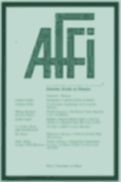

Guaranteed funds provide to the holder the guarantee to recover the totality of the initial capital, sometimes increased by an extra profit related to the out-performance of financial markets. Given the growing importance of guaranteed funds, a practical question in the industry is the choice of the management method to fulfil the guarantee. Two methods are used in practice: the option method and the cushion method. In the case of the option method, the fund manager statically hedges the fund using options. In the case of the cushion method, the fund manager dynamically allocates the wealth following specific trading rules to insure the fund will fulfil the guarantee.
The contribution of this paper is to show the similarities and differences between the two methods and to address the following issue : are these methods equivalent or is one better than the other? The results obtained in this paper may help practitioners to choose the management method for their funds. It is often said that the main advantage of the cushion method is its flexibility over time in terms of the choice of the underlying asset and degree of risk while the main advantage of the option method is its low managing cost as it is structured once in all and the possibility to communicate on the known fund performance relative to the market performance. In this paper we focus on the risk and performance issues. The comparison is done within a standard framework: a continuous-time Brownian motion process for the risky asset with constant interest rate, constant risk premium and constant volatility. Using different measures of risk and performance used by practitioners, the optimality of the methods is discussed. For example, using the mean and standard deviation, the option method seems to outperform the cushion method.

The main results presented in this paper can be summarised as follows: first, funds managed with the cushion method exhibit a return distribution with fatter tails than funds managed with the option method, emphasising the importance of extreme returns. Second, the option method seems to dominate the cushion method in the classical mean-variance framework used to analyse the risk/performance characteristics of the funds. However, when alternative measures of performance and risk, such as top quantiles and the absolute deviation, are used, this result can be reversed.
 Return to the publication list
Return to the publication list
The asymptotic distribution of extreme stock market returns
From VaR to stress testing : the extreme value approach
Winning in the best and worst of times : boom and crash options